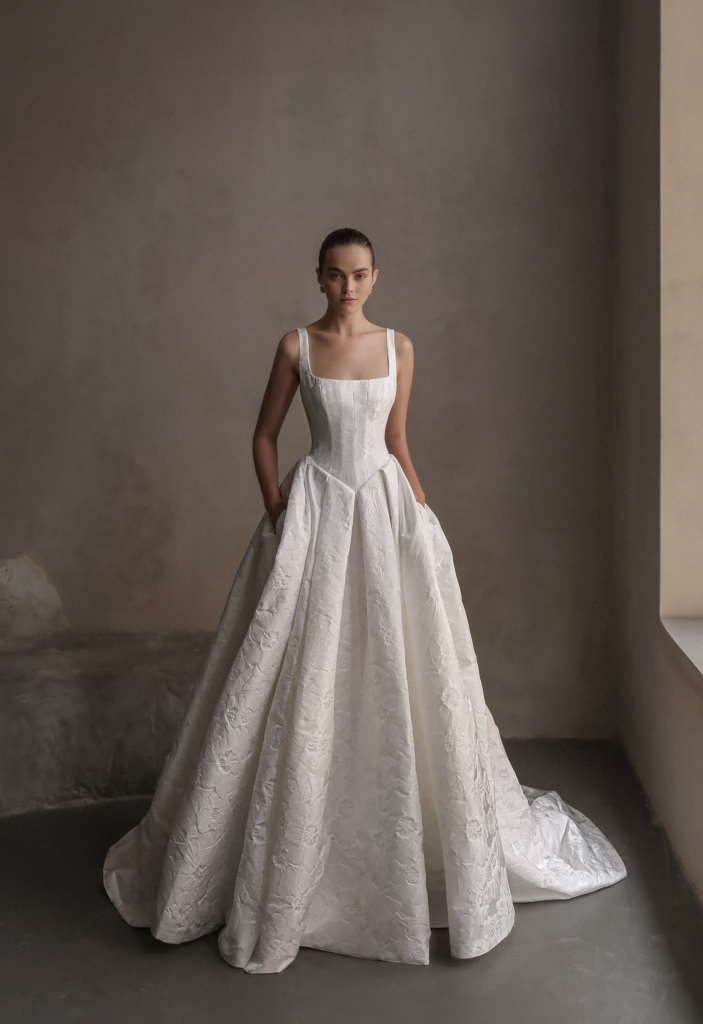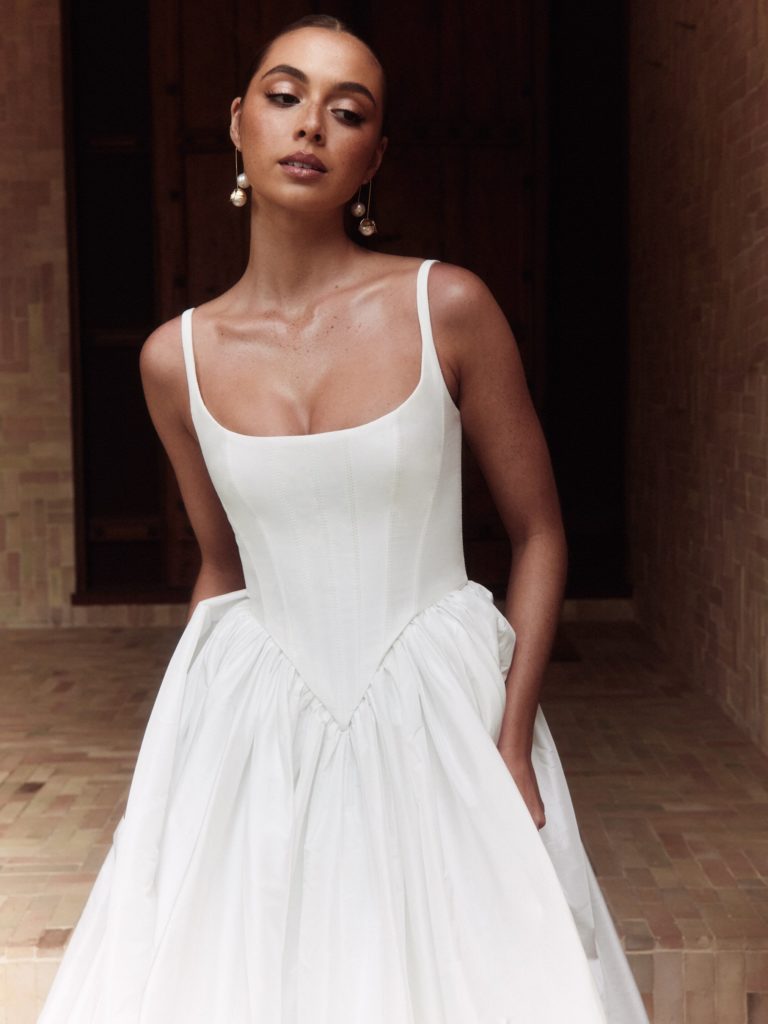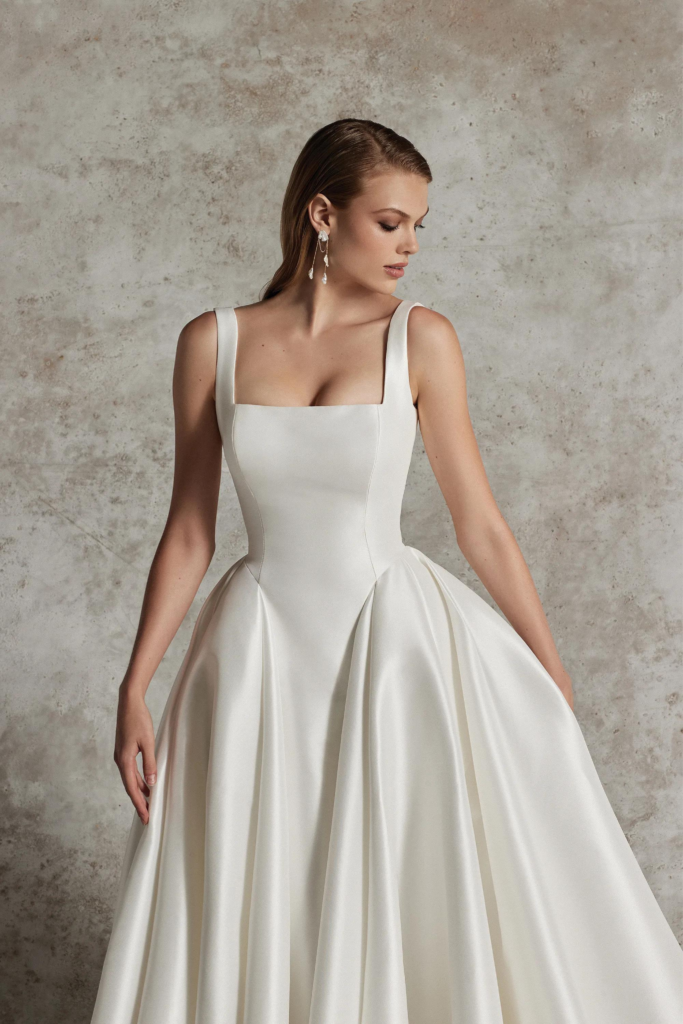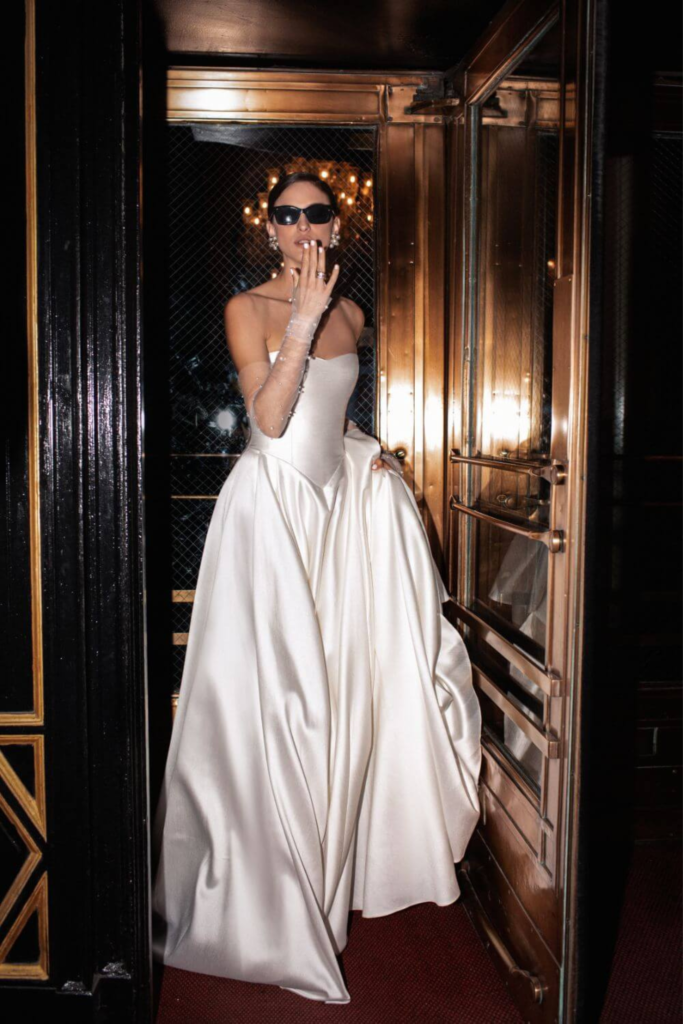Basque waistline wedding dresses might be the biggest bridal fashion trend of the year. With brands like Galia Lahav, Danielle Frankel, and CINQ debuting gowns with this signature detail at this year's New York Bridal Fashion Week, it's no wonder brides are clambering to adopt the style into their wedding wardrobes.
What Is a Basque Wasitline?
Characterized by its V-shaped U-shaped dip in the centre, this waistline creates a dramatic silhouette by accentuating the narrowest part of the waist and extending outwards towards the hips. Originating from traditional Basque clothing, this style is frequently seen in more structured gowns.
 Pnina Tornai 15092
Pnina Tornai 15092Pros and Cons Of a Basque Waistline
Pros:
- Flattering Silhouette: The Basque waistline creates an elongated torso by drawing the eye downward with its distinctive V-shape. This design naturally cinches at the narrowest part of the waist and flares out, emphasizing an hourglass figure. It’s particularly flattering for brides with a longer torso, as it enhances curves and balances proportions, giving a statuesque appearance.
- Elegant Detailing: Dresses with a Basque waistline often feature exquisite detailing like lace overlays, delicate beadwork, or embroidered patterns that follow the contours of the waistline, adding depth and texture to the gown. These embellishments enhance the dress's luxury, making it a stunning choice for formal weddings.
- Versatile Style: The waistline can be incorporated into various styles, from voluminous ballgowns to more understated A-line dresses. This versatility allows brides to tailor the look to their style while enjoying the benefits of the Basque waist's flattering design. It works well in vintage-inspired and contemporary settings, making it adaptable to various wedding themes.
 Neta Dover Tulip
Neta Dover TulipCons:
- Fit Considerations: While the Basque waistline can be incredibly flattering, it may not suit every body type. Brides with shorter torsos might find that the V-shape truncates their figure, creating a disproportionate look. Similarly, petite brides might feel overwhelmed by the pronounced waistline, which can dominate their frame rather than enhance it.
- Complex Alterations: Due to the structured nature of the Basque waistline, alterations can be more complicated and costly. The intricate detailing and unique cut require skilled tailoring to ensure the dress fits perfectly, particularly around the waist and hips. To achieve the ideal fit, brides should be prepared for higher alteration costs and a longer fitting process.
- Limited Trend Appeal: With the grand resurgence of this rather traditional dress detail, you do run the risk of dating your wedding dress if the surrounding details are also a bit too on-trend.
 Alena Leena Protea
Alena Leena Protea10 Stunning Dresses
If you love the idea of wearing this style on your prance down the aisle, then we've taken the liberty of putting together ten of our current favourite dresses on the market right now. Enjoy!
 Dana Harel Lunna
Dana Harel Lunna Reev Bridal Lynn
Reev Bridal Lynn Nicole and Felicia - NF043 ‘Look 22’
Nicole and Felicia - NF043 ‘Look 22’ Lihi Hod Dalia
Lihi Hod Dalia Leah Da Gloria Antoinette
Leah Da Gloria Antoinette Justin Alexander Xanadu
Justin Alexander Xanadu Justin Alexander Dabira
Justin Alexander Dabira Galia Lahav Dove
Galia Lahav Dove Flora Valentina
Flora Valentina Danielle Franke Nina
Danielle Franke Nina- Gráinne

